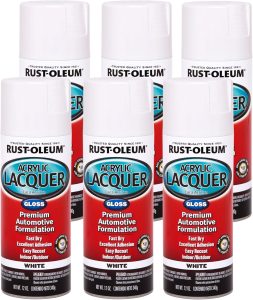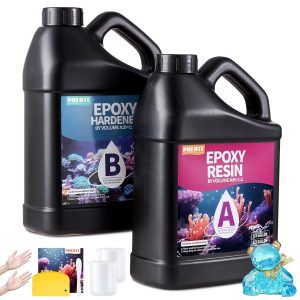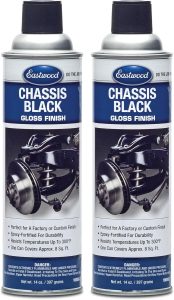When it comes to automotive restoration, modification, or simply maintaining the engine bay, one of the most important decisions you’ll make is selecting the right paint. The engine bay is often overlooked in terms of aesthetics, but a properly painted engine bay not only looks fantastic but also provides protection to the engine components from rust, dirt, and heat.
The engine bay can be a challenging environment for paint due to high temperatures, oil spills, coolant leaks, and exposure to dirt and grime. For this reason, selecting a paint that is durable, heat-resistant, and able to withstand these conditions is key to a successful paint job. We’ll discuss the best paints for engine bays, factors to consider, and tips on how to apply the paint properly to achieve a professional finish.
Why Choosing the Right Paint for the Engine Bay Matters
The engine bay is subjected to harsh conditions, including:
- High temperatures: The engine and exhaust components generate significant heat, and the paint must be able to withstand extreme temperatures without cracking, fading, or peeling.
- Oil and grease: Spills or leaks of oil, coolant, or other fluids are common in engine bays, and the paint must be resistant to these substances to prevent damage.
- Dirt and grime: The engine bay can accumulate dirt, dust, and grime, and you’ll want a paint that’s easy to clean and can resist staining or wear over time.
- Protection against rust: Metal parts in the engine bay, like the frame or firewall, are susceptible to rust, so the paint must provide a protective layer to prevent corrosion.
With these considerations in mind, it’s crucial to select the best paint for the engine bay to ensure both longevity and a clean, polished look.
Best Paint Options for Engine Bays
When choosing the best paint for your engine bay, it’s important to select paint that is specifically designed to handle the unique demands of the engine environment. Below are some of the best paint options for engine bays:
1. High-Heat Engine Paints

High-heat engine paints are specially formulated to withstand extreme temperatures. These paints are perfect for engine bay areas that are exposed to heat generated by the engine block, exhaust, or other hot components. High-heat paints are designed to handle temperatures up to 1200°F or more, depending on the brand.
Pros:
- Heat-resistant and can withstand high temperatures
- Can be applied to engine blocks, exhaust manifolds, and other hot components
- Resistant to cracking, chipping, and fading due to heat
Cons:
- Can be tricky to apply and may require proper surface prep
- Some brands may require curing in the oven after application
Top Choices:
- VHT Engine Enamel: A popular choice known for its high heat resistance (up to 1200°F) and smooth finish. Available in various finishes, including gloss and matte.
- Rust-Oleum High Heat Engine Paint: Provides excellent durability and heat resistance, ideal for engine components, exhaust manifolds, and headers.
- Krylon High Heat Engine Paint: Known for providing a durable finish that resists chipping and fading, even under extreme temperatures.
2. Automotive Lacquer Paints

Automotive lacquer paints are commonly used in engine bays for a clean, glossy finish. Lacquer provides a shiny, smooth finish that is perfect for showcasing engine components. It is highly durable and resistant to fading, which is important for engine bays that may be exposed to sunlight and heat.
Pros:
- Provides a glossy, showroom-quality finish
- Durable and resistant to fading
- Dries quickly and is easy to apply
- Available in a variety of colors and finishes
Cons:
- Can be sensitive to temperature and moisture during application
- Requires a clear coat for long-lasting protection
- Not as heat-resistant as high-heat engine paints for direct contact with hot engine components
Top Choices:
- Dupli-Color Perfect Match Automotive Lacquer: Known for its easy-to-use spray cans and quick-drying formula. Offers a glossy finish that works well for engine bays.
- House of Kolor Automotive Lacquer: Offers a vibrant finish and a range of custom colors, making it a great choice for an eye-catching engine bay.
3. Epoxy Paints

Epoxy paints are known for their durability and resistance to chemicals, oils, and extreme conditions. This makes them an excellent option for painting engine bays, as they provide long-lasting protection against rust, oils, and coolants. Epoxy paints also adhere well to metal surfaces, ensuring a smooth and durable finish.
Pros:
- Extremely durable and resistant to oils, coolants, and chemicals
- Offers excellent adhesion to metal surfaces
- Highly resistant to rust and corrosion
- Suitable for engine bay components that are exposed to dirt and grime
Cons:
- Requires a primer for best results
- Takes longer to cure compared to other paints
Top Choices:
- Rust-Oleum Professional Epoxy: Known for its excellent resistance to chemicals, abrasion, and corrosion, making it a top choice for engine bay surfaces.
- POR-15 Rust Preventive Coating: A powerful epoxy paint that is great for protecting metal surfaces in the engine bay from rust and corrosion.
4. Heat-Resistant Ceramic Coatings

Heat-resistant ceramic coatings are designed to provide superior heat protection and performance. These coatings are typically used for engine components like headers, exhaust manifolds, and other high-temperature parts, but they can also be applied to engine bay surfaces to prevent heat damage. Ceramic coatings offer excellent resistance to high temperatures, oils, and dirt, making them an excellent choice for engine bay components.
Pros:
- Outstanding heat resistance (can withstand temperatures over 2000°F)
- Provides excellent protection against oil, dirt, and grease
- Creates a smooth, clean finish that’s easy to clean
Cons:
- Requires professional application or careful DIY techniques
- May be more expensive than traditional engine paints
Top Choices:
- Cerakote High-Temperature Ceramic Coating: Provides exceptional heat resistance and is perfect for engine parts, headers, and other components exposed to high temperatures.
- Hypercoating Ceramic Coatings: Known for its heat resistance and ability to withstand high temperatures without cracking or peeling.
5. Underbody and Chassis Paints

While not specifically designed for the engine, underbody and chassis paints are often used to paint parts of the engine bay, especially areas that require added protection against rust, dirt, and chemicals. These paints are designed to protect metal surfaces from corrosion and provide a durable, matte or semi-gloss finish.
Pros:
- Protects against rust and corrosion
- Can be used on engine bay components like brackets and chassis
- Easy to apply and provides a durable finish
Cons:
- May not be as heat-resistant as engine-specific paints
- Generally offers a more utilitarian finish, not a glossy appearance
Top Choices:
- Eastwood Underhood Black: A popular choice for underhood and engine bay applications, providing a durable matte finish.
- Rust-Oleum Chassis Saver: Offers excellent protection against rust and corrosion, ideal for engine bay areas exposed to moisture or chemicals.
How to Apply Paint in the Engine Bay
Painting your engine bay requires careful preparation to ensure a smooth and durable finish. Follow these steps to get the best results:
1. Clean the Engine Bay
Before painting, you need to thoroughly clean the engine bay to remove oil, grease, dirt, and other contaminants. Use a degreaser and water to scrub the surfaces, and make sure to rinse thoroughly. This ensures that the paint will adhere properly.
2. Mask Off Components
Cover any components that you don’t want to paint, such as hoses, wiring, battery terminals, and delicate parts. Use masking tape and plastic sheeting to protect these areas.
3. Sand the Surface
Lightly sand any metal or plastic areas that you plan to paint. This helps to create a rough surface for better paint adhesion. For best results, use a fine-grit sandpaper.
4. Apply Primer
For metal parts, it’s a good idea to apply a primer before painting. A high-heat primer is ideal for engine components. The primer helps the paint stick better and provides an additional layer of protection against rust.
5. Apply Paint
Once the primer has dried, apply your chosen paint in thin, even coats. If using a spray paint, hold the can about 6 to 8 inches away from the surface to avoid drips. Allow each coat to dry completely before applying another coat. You may need 2 to 3 coats for full coverage.
6. Allow to Cure
Some paints, especially high-heat engine paints, may require curing to achieve optimal hardness and durability. Follow the manufacturer’s instructions for curing times, which may involve heating the engine up once the paint is dry or baking it in an oven.
7. Final Touches
Once the paint has fully cured, remove the masking tape and plastic, and inspect the painted areas for any touch-ups or imperfections.
7 Frequently Asked Questions
1. Can I use regular car paint for the engine bay?
No, regular car paint isn’t designed for the heat and chemical exposure in the engine bay. It may not withstand the high temperatures and could crack, fade, or peel over time.
2. Do I need to use a primer before painting the engine bay?
Yes, using a primer is highly recommended, especially for metal parts. It helps the paint adhere better and provides additional protection against rust.
3. How long does engine bay paint take to dry?
Drying time depends on the type of paint used. Most spray paints will be dry to the touch within 30 minutes, but it may take several hours for full curing. Always follow the manufacturer’s instructions.
4. Can I paint the engine block itself?
Yes, you can paint the engine block, but make sure to use a high-heat engine paint that can withstand the extreme temperatures produced by the engine.
5. Should I use a heat-resistant clear coat?
Using a heat-resistant clear coat can add an extra layer of protection and durability, especially in high-temperature areas like the engine block and exhaust manifold.
6. Is it necessary to remove the engine before painting the engine bay?
No, it’s not necessary to remove the engine, but it can make the painting process easier. However, with proper masking and preparation, you can paint around the engine without needing to remove it.
7. Can I use ceramic coating on the engine bay?
Yes, ceramic coatings are an excellent option for high-heat areas and offer superior protection against heat, oils, and grime. Just be sure to follow the application instructions carefully.
Conclusion
Painting your engine bay is a great way to enhance the appearance of your vehicle while also providing protection against the elements. The best paint for your engine bay depends on the level of durability and heat resistance you need. High-heat engine paints, automotive lacquers, epoxy paints, and heat-resistant ceramic coatings are all great options, each with its own set of benefits. By choosing the right paint and following the proper application process, you can achieve a durable, professional finish that will last for years. Happy painting!


Leave a Reply